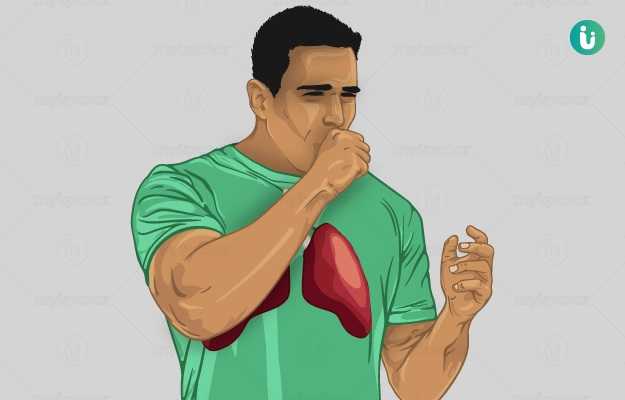Treatment of chest congestion primarily focuses on relieving the airway from accumulated mucus as well as to treat the underlying cause, whether it is an infection or inflammatory condition. The treatment protocol mainly aims to:
Induce mucus clearance
To provide symptomatic relief from congestion and tightness in the chest your doctor may prescribe you a few drugs like:
- Decongestants: Decongestants function to clear the adhered accumulated mucus in the chest and airways. They modulate the consistency of mucus by thinning it out and making it flow outside in the form of cough. Draining mucus from airways also aids in improving nasal ventilation.
- Bronchodilators: This category of drugs enlarges the diameter of the congested airway, thereby providing symptomatic relief to the patient. It also increases ciliary action of the cell lining of respiratory pathway cells along with decreasing surface mucin secretion and mucin secretion in submucosal glands. When used along with decongestants, it eases mucus expulsion. However, long term use of bronchodilators is not recommended in cases of mucus hypersecretion.
- Mucolytics: The main drug in this category is N acetylcysteine. It is a potent antioxidant, which acts by reducing mucus viscosity, hence promoting its discharge. On a molecular level, N acetylcysteine breaks the bonds between mucin polymers and make it flowy in consistency. Studies suggest that this specific antioxidant helps in improving overall lung function in COPD patients. For other diseases like cystic fibrosis, asthma, its effects are still under research.
- Inhaled hypertonic saline: 7% hypertonic saline is generally used as an inhalant for relieving chest congestion. It helps ameliorate mucus clearance and moderates the airflow in lungs. The mechanism of action of this solution is based on rehydration of the periciliary layer by drawing water from underneath the epithelial cells.
Decrease mucus production and secretion
Drugs such as glucocorticoids are used to inhibit excessive mucus production and reduce inflammation. They also regulate the multiplication of mucin cells thus reducing the production of mucus.
Combating airway infection
Airway infection could be caused by a virus or bacteria. Viral infections are self-limiting and usually do not need intervention. However, to alleviate bacterial population, antibiotics are recommended. Antibiotics could be delivered in the form of inhalants or oral drugs. In severe cases, intravenous antibiotics could also be prescribed to subside congestive symptoms.
Antiallergics
Congestion arising in a response to certain allergies, antiallergics comes into action like antihistamines. These are available in the form of oral or nasal form. Leukotrienes receptor antagonist are also used to counteract leukotrienes, which are responsible mediators of allergic reactions. These anti-allergic drugs provide relief in counteracting allergies, which leads to the formation of mucus plugs, causing chest congestion eventually.
Non-drug therapy
Various non-drug therapies are included in the management of hypersecretion of mucus resulting in chest congestion. Some of them are as follows:
- Smoking cessation: Smoking is one of the main causative factors of inflammatory conditions of lungs. Toxic constituents of tobacco smoke promote mucin secretory cells to produce more mucus. It also induces structural changes in secretory cells, making it difficult for the body to expel mucus out by itself. So, quitting smoking will cut off the ongoing hypersecretion, improving the patient’s condition.
(Read more: Disadvantages of smoking and benefits of quitting smoking)
- Physiotherapy: It includes deep breathing exercises and effective coughing techniques to ease the condition. The patient also undergoes chest percussion, postural expectoration of mucus and inhalational therapies. Inhalational therapies are performed through humidified inhalation or aerosol inhalation. This therapy moisturises the dried airways, thins sputum, facilitates expectoration and prevents mucus plug formation.
- Chest wall oscillation: This non-drug therapy has shown evident results in improving congested chest conditions associated with cystic fibrosis, bronchiectasis and COPD. It promotes the release of plugged mucus from airways, facilitating its outward movement. Doing this exercise opens the obstructed respiratory tract and significantly improves breathing.
Lifestyle changes
Other than the conventional mode of treatment, chest congestion can be managed by changing certain lifestyle patterns. These include the consumption of healthy foods, which helps in the clearance of mucus from the respiratory system. Foods rich in antioxidants aid in this process of evacuation. Encourage yourself to develop a healthy eating habit including plenty of green vegetables and fruits.
Home remedies
An alternative way of managing congested chest is by opting few home remedies. Home remedies are an easy and effective way of getting symptomatic relief if done regularly and consistently. Home remedies consist of various food and home-based ingredients which helps the individual to get rid of chest congestion with almost no associated side effects.

 Doctors for Chest Congestion
Doctors for Chest Congestion  OTC Medicines for Chest Congestion
OTC Medicines for Chest Congestion
 Chest Congestion articles
Chest Congestion articles

 Home Remedies for Chest Congestion
Home Remedies for Chest Congestion




































 Dr. Laxmidutta Shukla
Dr. Laxmidutta Shukla











